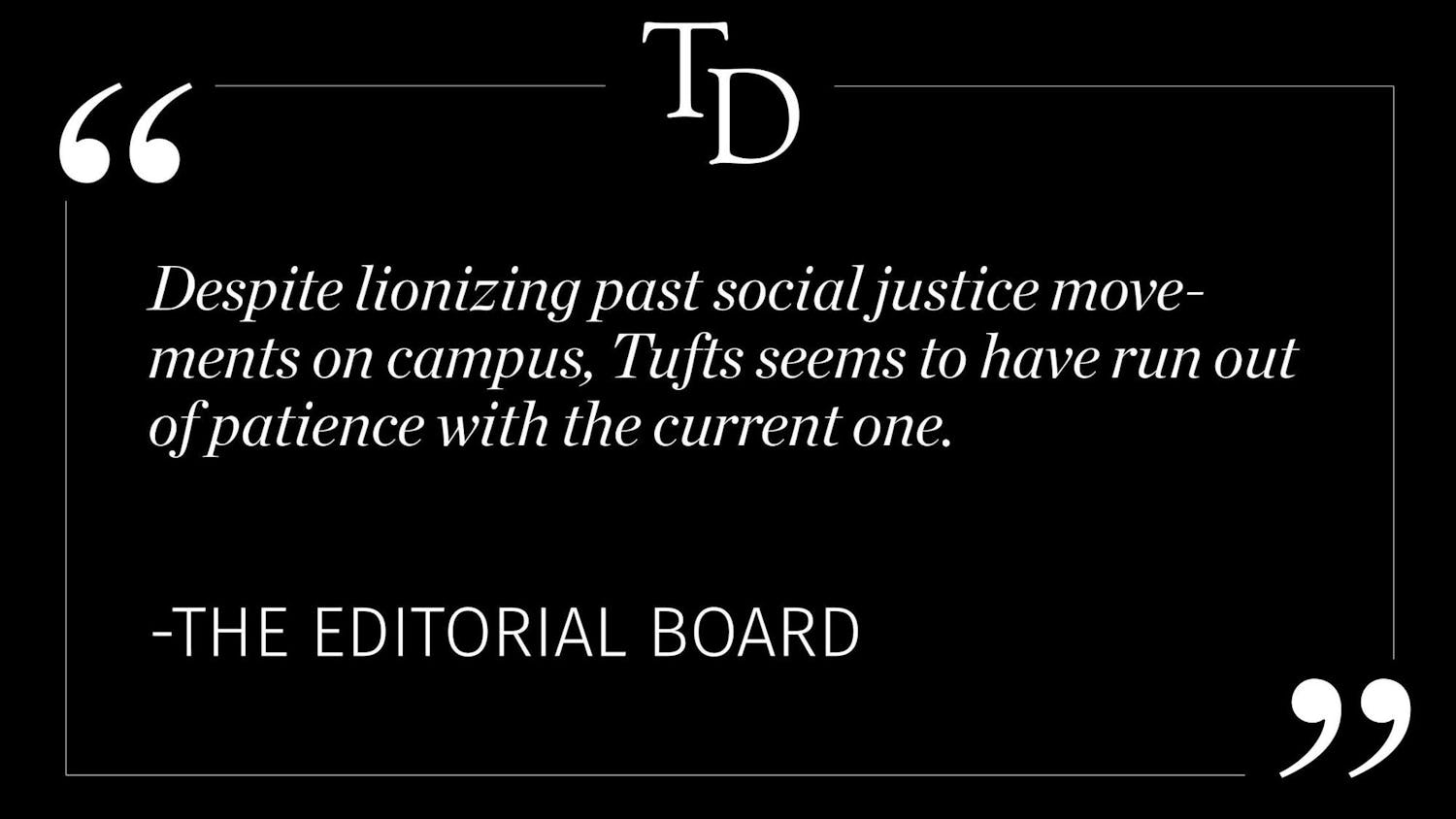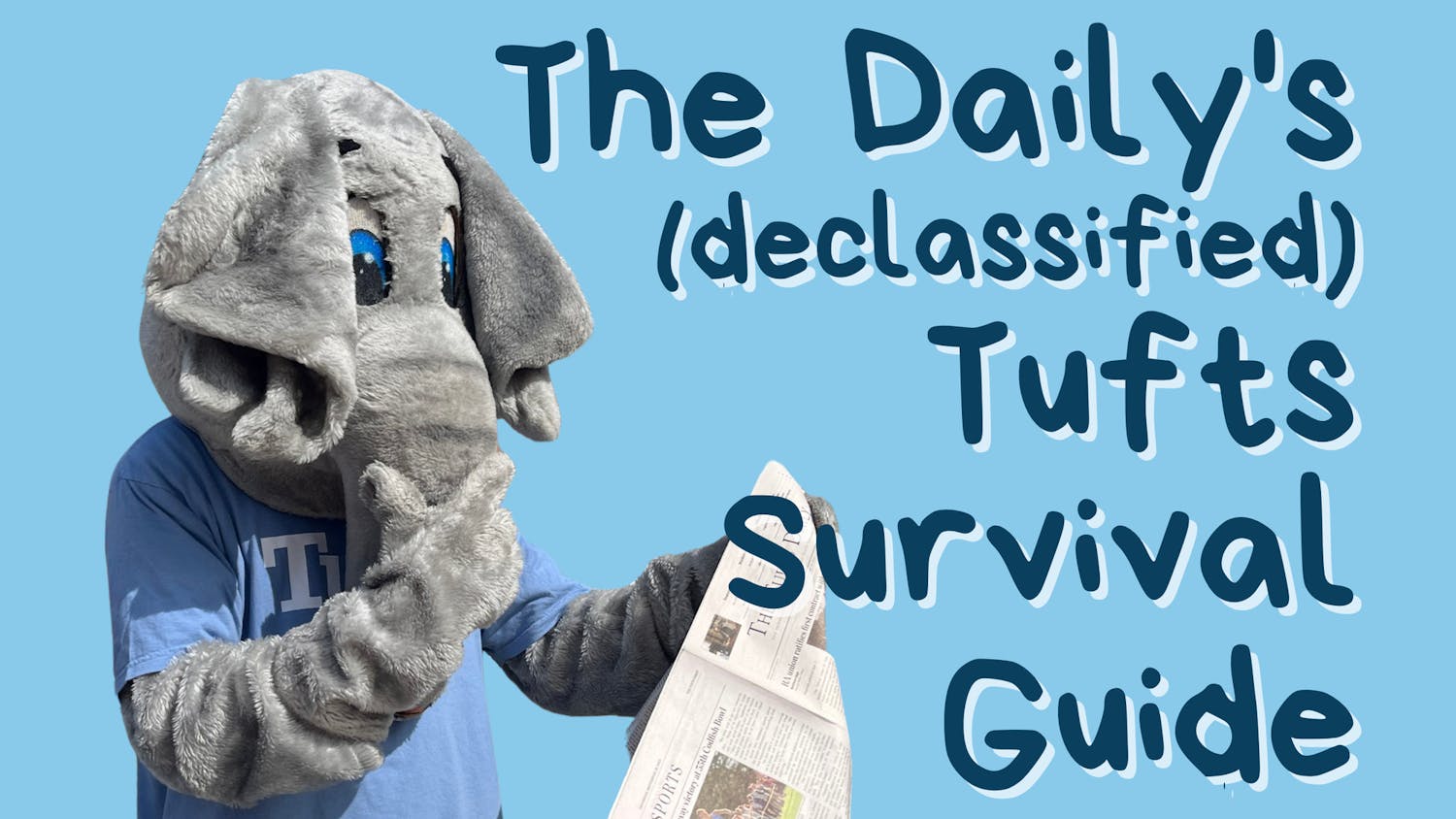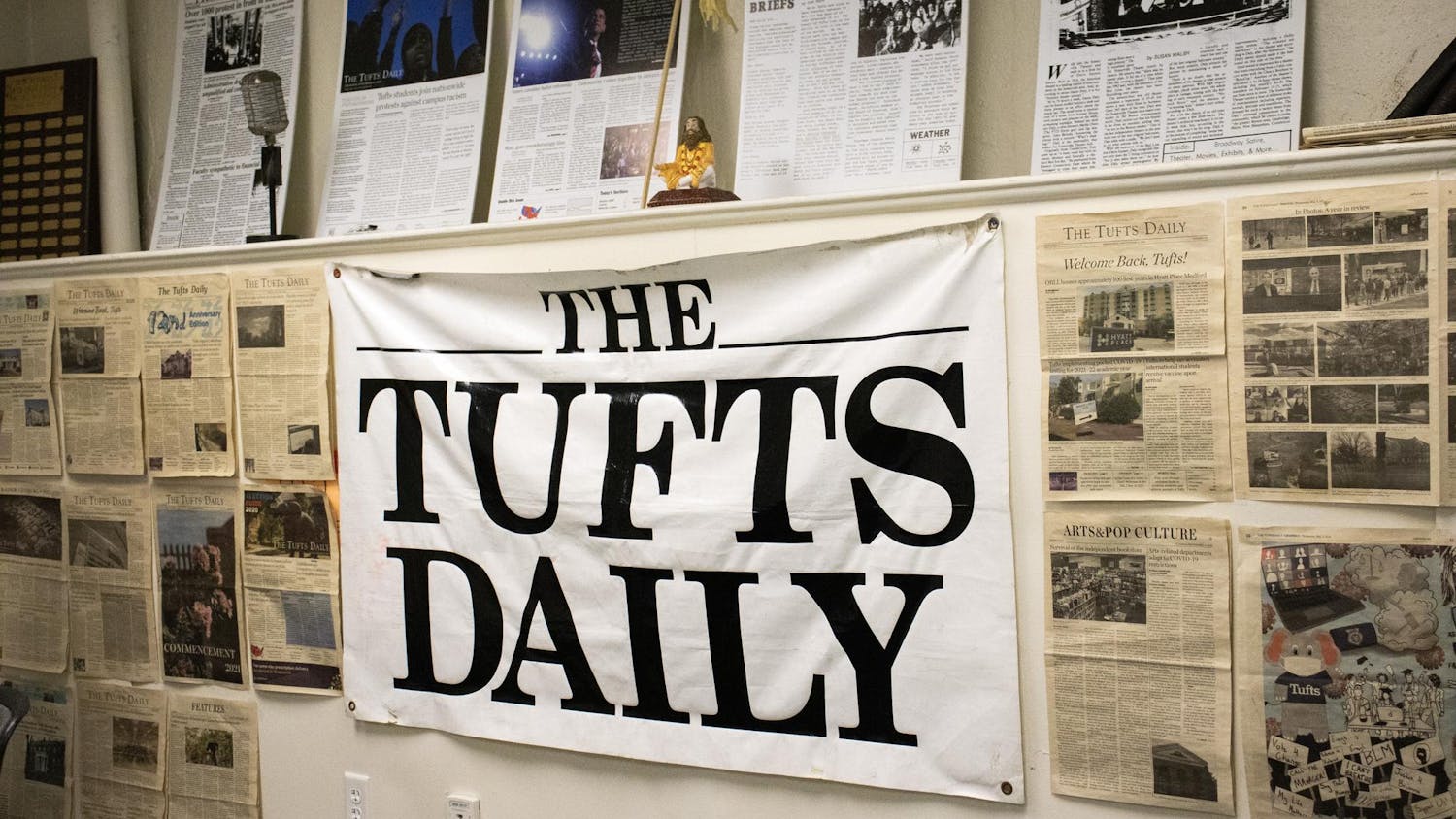In red, black and white, a masked face peeks out from a wall outside the Mayer Campus Center. Fingers flash a peace sign. A soldier holds a gun with the nuclear disarmament symbol on her jacket. The ironic characters and whispers of injustice make clear, in an image we pass by every day, that oppression lingers around us.
Shepard Faireys street art mural, now in its fourth incarnation, is displayed outside JumboExpress. Intentionally temporary quoted in the Daily in 2009: Its like everything: it eventually goes away it depicts anti-war symbolism in Faireys signature OBEY style and it is seared into the subconscious of the students who see it all the time. It would be absurd to say that there is art that doesnt express a message just as it would be to say that there is activism that doesnt rely on a thread of creativity.
At an October peace march through downtown Boston, one activist held a large cardboard predator drone. She led a line of Guy Fawkes-masked protestors, associating in the minds of onlookers the violence of signature strikes with the anonymous distance from the victims. The march had hundreds of other sign holders chanting passionately for harmony, which made the silent line of drone victims even more distinct. The purpose of this sort of demonstration isnt to be so compelling that a policymaker immediately signs a law: its to show a community that rejects the violence of the rest of society and can flourish without it. Illumination, though, takes imagination.
Recent on-campus actions have taken this mantra to heart. In February, the Consent Culture Network (CCN) rallied at the Winter Bash bus stop chanting, Hey, I just met you/And this is crazy/But back the fuck up/If I say maybe. Its wacky. Its memorable. It makes you smile. And its exactly in keeping with the protests message: only yes means yes. The ruggedness of the crowd of voices actually made the chant even more compelling, as students passing by stopped to listen to the lyrics and watch the performance.
But the art in activism doesnt necessarily just draw attention, it breathes life into action and texture into a message. When Tom Morello travels to a union rally or an Occupy encampment playing his energetic Worldwide Rebel Songs, the demonstration is empowered by the connection the music inspires between their plight and others around the globe. Common symbolism creates a network among all resistance, and even if its just a song played at a ton of protests, a community signifier is formed that gives the individual strength.
Activism is social reformation. Art is re-imagination. Both are education and, in fact, inseparable. Were quick to label events like HONK! as exemplars of wedding art and activism, but care to remember that art isnt discrete it permeates everything around us, and perhaps when it is most subtle, it is most compelling. A march seeks to reform society by reimagining scale to draw attention to and enlighten the community. Occupy re-imagined society itself, creating an anarcho-syndicalist commune in the middle of a sea of capitalism illuminating how society can function without an oppressive class hierarchy.
After Occupy Boston was evicted, Os G?meos, a Brazilian street artist team, created a massive graffiti mural of a young protestor sitting on a building adjacent to Dewey Square. The artistic dimension of resisting oppression may be subtle or may be at the forefront, but it is never absent. All of our pain is interconnected and those connections are beautiful.
--
Walker Bristol is a junior majoring in religion and philosophy. He can be reached at Walker.Bristol@tufts.edu





